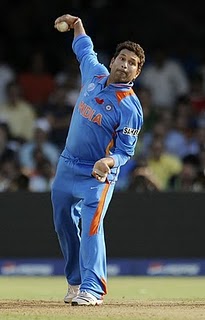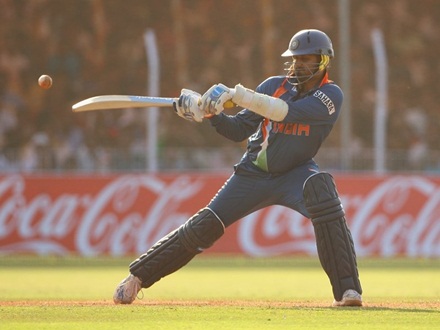I mean, Cricket – the game that is played in most of the major countries of the world.
We had our “Agile Hyderabad” group meeting yesterday. We spent most of the time discussing about testing challenges. Most of the companies those follow agile software development has the problem of developers and testers keep “We and They” attitude.
While I was watching cricket, as we are fully into the World cup fever, it struck me that there are few things we could learn from the cricket teams. A cricket team has “Batsmen” and “Bowlers”. However, if it is required, a bowler (supposedly “none to less” experienced in batting) is expected to make few runs. Same way if the regular bowlers are not making an impact, the captain decides to use any bowling skills of the batsmen. The goal is to win the match and every member of the team strives for it.
The goal of an agile team is to deliver the quality software at the end of the iteration. The team has to figure out who does what, but the goal is to deliver the stories. Some team members would have the specialized skills like programming or testing, but they should be willing to do other activities outside their specialization also. This could be a developer performing some testing or tester fixing bugs or architect writing documentation or what ever. Agile teams need to redefine their roles and develop “We are all in this” attitude.
Moving on to a different topic, when I talk about agile way of developing software, it is big change to lot of people from how they have been building software. People say – “ We have been doing it for ages. Why do we do it in different way now?” Do we have to follow something just because we have been following it forever?
Long time ago when I was small, a cricket match always started with a pace bowler starting the bowling session with a new ball. It has been well established for decades that a pace bowler could make a new ball to swing and get some early wickets. To my surprise, a spin bowler started bowling session when India played against Australia in the world cup 2011. The reason why the captain took that strategy is because they don’t have enough good pace bowlers and they have very good spinners. Besides, Australia is not very good at playing spin bowling. Indian team ditched the conventional practices and implemented the practice what goes with the current situation. As a whole the team did a great job and India won the match against the odds.
In the current market conditions, the stakeholders of a software project expect that the time-to-market should be reduced to beat the competition. Organizations want to be adaptive to the market requirements. To achieve today’s market needs, an organization needs to implement the practices those work for the current conditions. Change is hard, but it is inevitable.




Thanks Lesley.
As a trainer I have often felt that there has been a developers v end-users match with the trainer in between acting as go-between and referee. And yet all along all I have ever tried to do is contribute to a successful outcome. The trainer tends to be one of the first end-users, one of the first customers and hence a tester of real world users. I applaud your comments on pitching in together instead of jobsworthy approach which can lead to poor communication and a reluctance to focus on winning and delivering!
Thanks!
Nice analogy, Nanda. I really liked it.
A year and half ago Anne-Marie Charrett learnt something (else) from Cricket. http://mavericktester.com/damn-it-all-its-just-not-cricket-or-is-it
I myself use cricket references very heavily when I talk to other team members (Testers, Programmers and other) Its very useful we use some common thing to define something which we may/may not have in common.
Thanks for sharing your thoughts.